Written by J.A Dobado | Last Updated on April 22, 2024
What is ascorbic acid?
Vitamin C, or ascorbic acid, is a water-soluble vitamin that was discovered in 1912 and isolated in 1928.
The IUPAC systematic name for vitamin C is (R)-3,4-dihydroxy-5-((S)-1,2-dihydroxyethyl)furan-2(5H)-one.
Chemical structure
The structure of vitamin C is always the L enantiomer salt of ascorbic acid and its oxidized forms, such as dehydroascorbate (DHA). Ascorbic acid is a weak acid derived from a sugar.
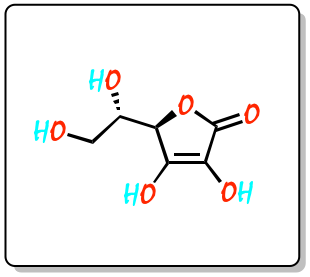 |
| 3D Structure |
In biological systems, ascorbic acid can be found only at low pH, but in basic solutions (pH > 5) it is found in ionized form, as ascorbate. All of these molecules have the activity of vitamin C and are therefore used as synonyms for vitamin C.
Functions
Vitamin C is popular for its ability to help fight colds and flu. This is because vitamin C is a powerful antioxidant that neutralizes potentially harmful organisms and enhances the immune system. Vitamin C helps maintain healthy teeth and gums, aids in the absorption of iron, and aids in wound healing, as well as strengthening the walls of blood vessels.
Industrial production
In 1933, it was the first chemically produced vitamin. Two main methods of industrial production of vitamin C are used. Both processes use D-glucose as the starting product.
The Reichstein process, developed in the 1930s, uses a single prefermentation followed by a purely chemical route. Later, in the 1960s, another process was developed that uses additional fermentation to replace part of the subsequent chemical steps.
Reichstein process runs in the following steps:
- Hydrogenation of D-glucose to give D-sorbitol in a nickel-catalyzed process at high pressures and temperatures.
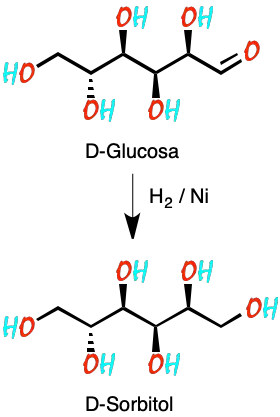
- Dehydrogenation of D-sorbitol to L-sorbose. A bacterial fermentation process (Acetobacter) is carried out.
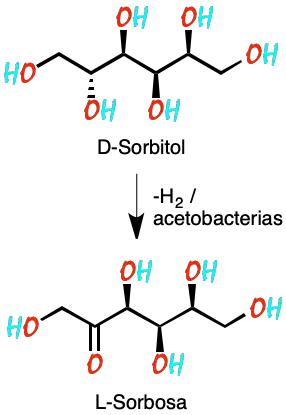
- Oxidation of L-sorbose with oxygen and platinum catalyst.
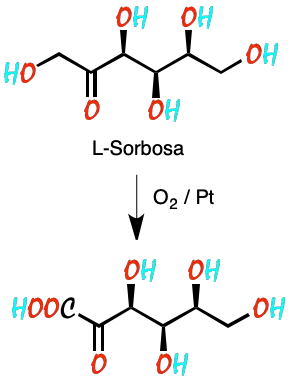
- Final step of ring closure, by a dehydration reaction (γ-lactonization with water removal).
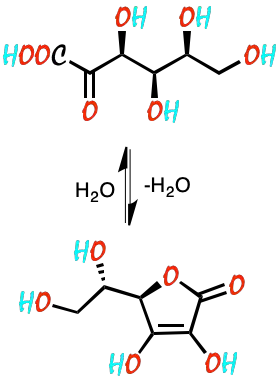
The Reichstein process and current two-step fermentation processes use sorbitol as starting material and convert it to sorbose by fermentation. They convert sorbose to 2-keto-L-gulonic acid (KGA) through another fermentation step, avoiding an additional intermediate.
Food sources
Citrus fruits, red peppers, kale, kiwi, broccoli, Brussels sprouts, cauliflower, strawberries, red cabbage, cantaloupe, spinach, tomatoes, green peppers, parsley, dark green leafy vegetables and potatoes.